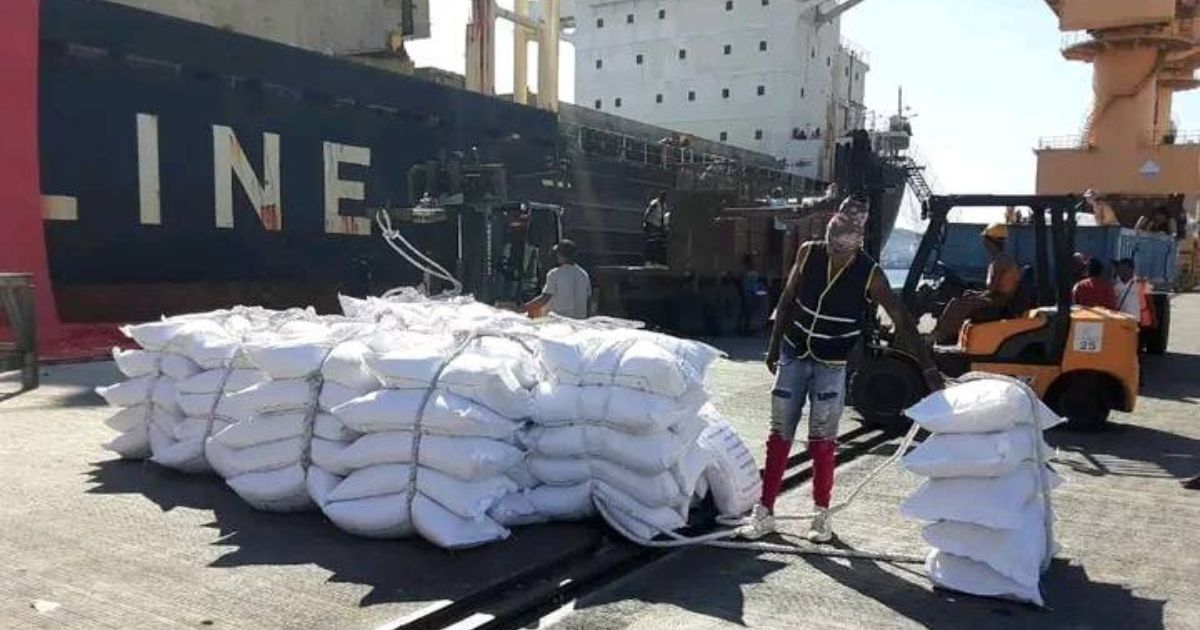The Cuban government has unveiled a new strategy aimed at bolstering maritime and port activities in the regions of Santiago de Cuba, Granma, and Guantánamo. This initiative seeks to improve the distribution of essential goods amidst the ongoing economic crisis and rising criticisms over delays in food deliveries.
In a recent post on his Facebook page, Eduardo Rodríguez Dávila, the Minister of Transportation, highlighted statements made by Roberto Ricardo Marrero, the Deputy Minister and current director of the Maritime Port Group (GEMAR). Marrero outlined a plan that includes the rehabilitation of port infrastructure, the optimization of coastwise shipping, and the integration of new technologies to enhance efficiency in operations.
One of the key proposals is to increase coastwise shipping activities at the ports of Baracoa, Boquerón, and Niquero. The government claims this will ensure that at least 70% of the basic food basket reaches these areas via maritime routes. Additionally, plans were revealed to restore a barge and a tugboat dedicated solely to this traffic.
At the Santiago de Cuba port, Marrero emphasized efforts to streamline container ship operations, aiming to expedite the importation process in the eastern region. He also mentioned the construction of a new warehouse at the port of Baracoa, which was severely damaged by Hurricane Sandy over a decade ago.
Despite these announcements, the reality of Cuba's port infrastructure remains fraught with challenges such as lack of maintenance, outdated technology, and insufficient resources to implement necessary investments. Recent months have seen consistent delays in the distribution of food through the ration book system, highlighting logistical and distribution issues of basic products.
The regime has also pledged to improve conditions for port workers, shipyard employees, and sailors, promising better communication with their leaders, salary increases, and improved nutrition. Furthermore, there is a commitment to intensify efforts against misconduct, illegal activities, and criminal acts, acknowledging existing problems within these entities.
While the Cuban government assures these improvements, the transportation and distribution crisis continues to burden the population, who face shortages of food, fuel, and other essential goods. Last December, the Ministry of Domestic Trade (MINCIN) reported delays in the distribution of basic products through the ration book amidst a crisis impacting thousands of Cuban families.
In a social media statement, the government emphasized that ensuring the regulated family basket remains a priority, despite the significant logistical and transportation challenges of supplying over 12,000 stores across the nation. By the end of 2024, MINCIN confirmed via official channels that the distribution of the ration book for 2025 was secured for all households.
However, despite promises of system continuity, the quantity of guaranteed food continues to dwindle, reflecting deepening economic and organizational difficulties. This announcement came shortly after the government approved the elimination of subsidies for the basic basket distributed through the ration book.
Understanding Cuba's Port and Distribution Challenges
What is the Cuban government's plan for port improvements?
The plan involves rehabilitating port infrastructure, optimizing coastwise shipping, and integrating new technologies to boost efficiency in operations.
How does the government intend to improve food distribution?
By increasing coastwise shipping activities in key ports, the government aims to ensure that at least 70% of the basic food basket reaches certain areas by sea.
What challenges do Cuba's ports currently face?
Cuba's port infrastructure struggles with maintenance issues, outdated technology, and a lack of resources necessary for crucial investments.
